Pole Figure Color Coding
Explains how to control color coding across multiple plots.
A central issue when interpreting plots is to have a consistent color coding among all plots. In MTEX this can be achieved in two ways. If the minimum and maximum values are known then one can specify the color range directly using the options colorrange or contourf, or the command setcolorrange is used which allows setting the color range afterward.
A sample ODFs and Simulated Pole Figure Data
Let us first define some model ODF_index.html ODFs> to be plotted later on.
cs = crystalSymmetry('-3m'); odf = fibreODF(Miller(1,1,0,cs),zvector) pf = calcPoleFigure(odf,[Miller(1,0,0,cs),Miller(1,1,1,cs)],... equispacedS2Grid('points',500,'antipodal'));
odf = ODF
crystal symmetry : -3m1, X||a*, Y||b, Z||c*
specimen symmetry: 1
Fibre symmetric portion:
kernel: de la Vallee Poussin, halfwidth 10°
fibre: (11-20) - 0,0,1
weight: 1
Setting a Colormap
By default, MTEX uses the default MATLAB colormap jet, which varies from blue to red for increasing values.
plot(pf)
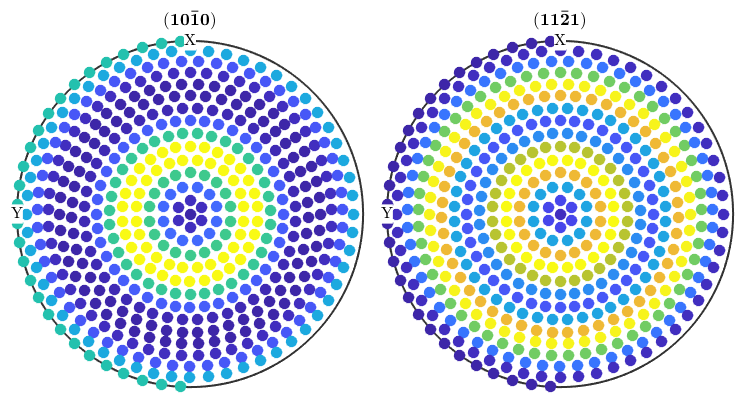
However, sometimes more simple colormaps are preferred, like the LaboTeX colormap
mtexColorMap LaboTeX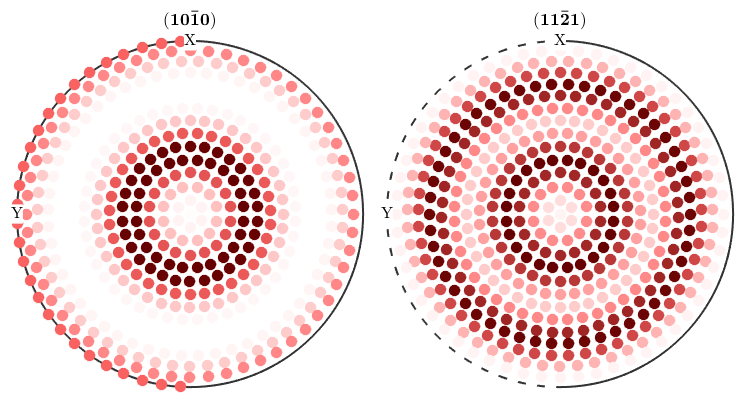
or a gray scale colormap.
mtexColorMap white2black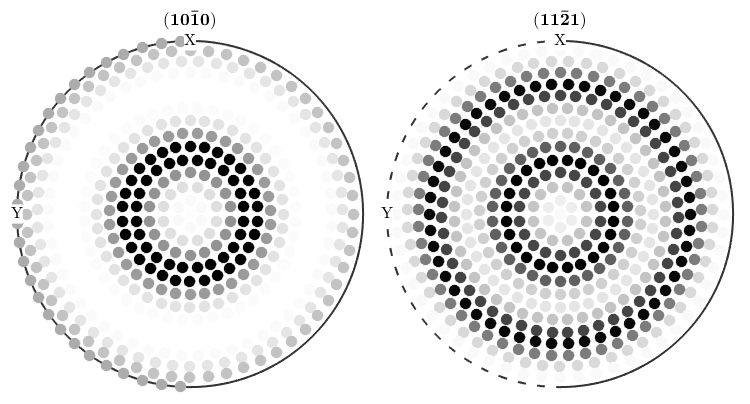
One can set a default colormap adding the following command to the configuration file mtex_settings.m
setMTEXpref('defaultColorMap',LaboTeXColorMap);
Tight Colorcoding
When the plot is called without any other option, the chosen color coding is the one called tight, which ranges the data independently from the other plots, i.e., for each subplot the largest value is assigned to the maximum color and the smallest value is assigned to the minimum color from the colormap.
close all
plot(pf)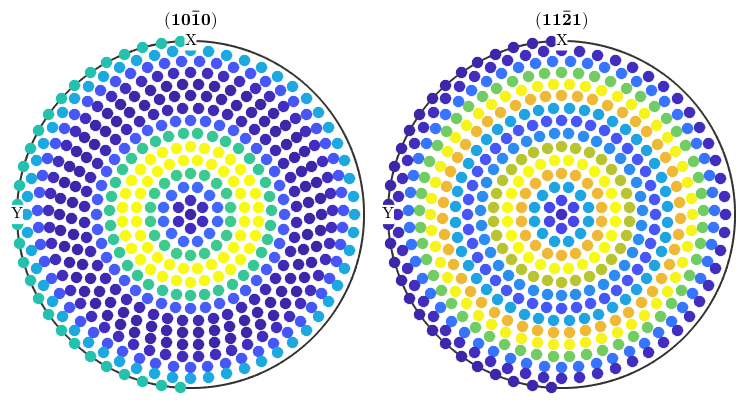
Equal Colorcoding
The tight colorcoding makes the reading and comparison between pole figures hard. If you want to have one colorcoding for all plots within one figure use the option colorrange to equal.
plot(pf,'colorrange','equal')
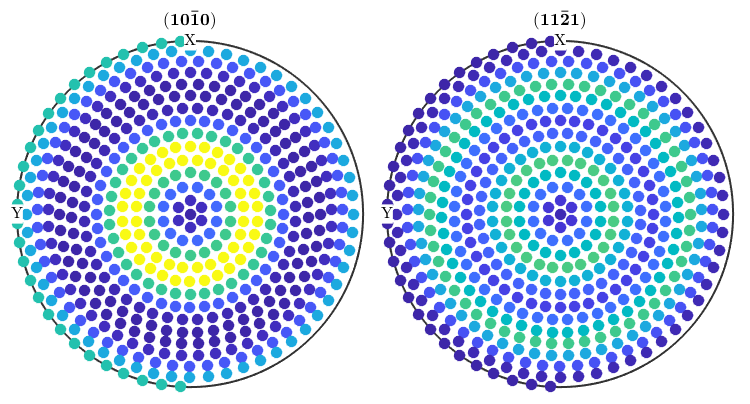
Setting an Explicit Colorrange
If you want to have a unified colorcoding for several figures you can set the colorrange directly in the plot command
close all plotPDF(odf,[Miller(1,0,0,cs),Miller(1,1,1,cs)],... 'colorrange',[0 4],'antipodal'); figure plotPDF(.5*odf+.5*uniformODF(cs),[Miller(1,0,0,cs),Miller(1,1,1,cs)],... 'colorrange',[0 4],'antipodal');
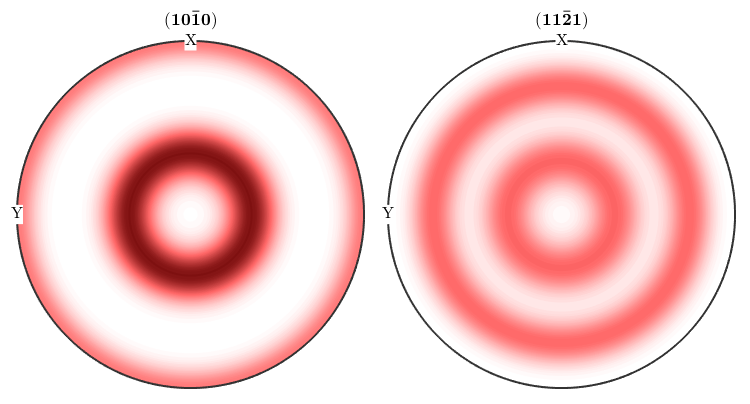
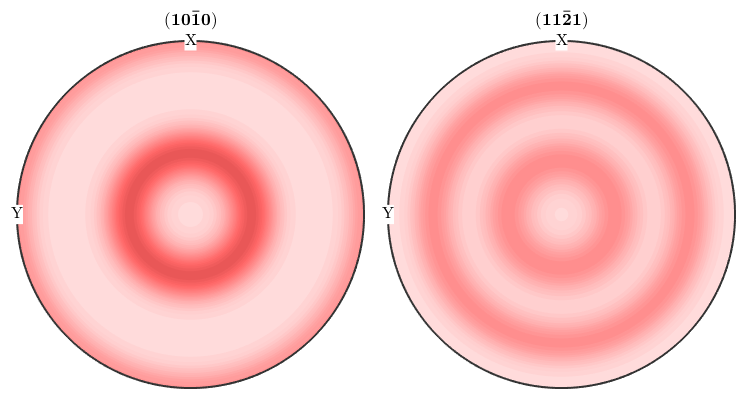
Setting the Contour Levels
In the case of contoured plots, you can also specify the contour levels directly
close all plotPDF(odf,[Miller(1,0,0,cs),Miller(1,1,1,cs)],... 'contourf',0:1:5,'antipodal')
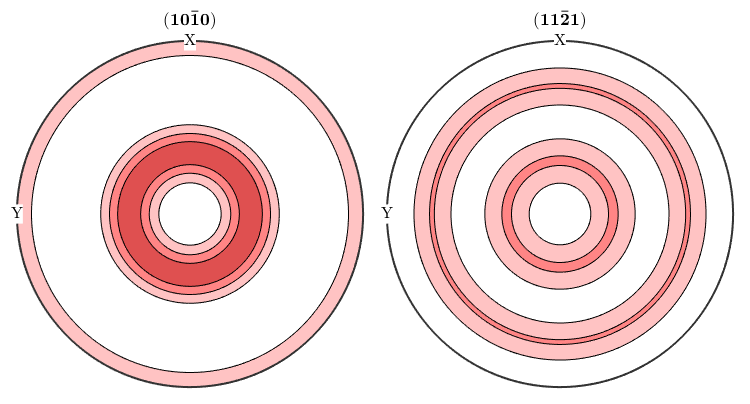
Modifying the Color range After Plotting
The color range of the figures can also be adjusted afterward using the command setcolorrange
CLim(gcm,[0.38,3.9])
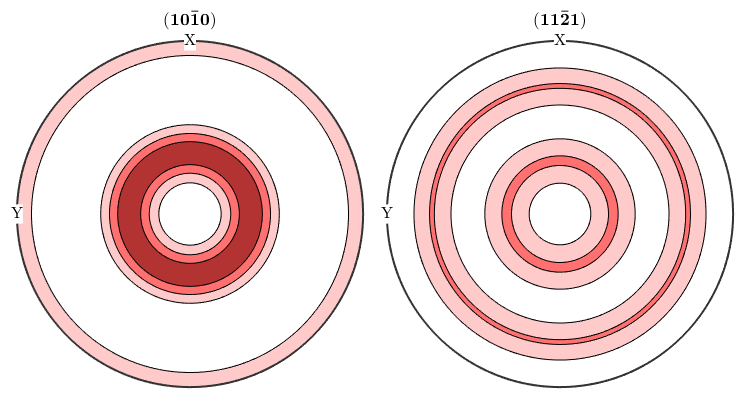
Logarithmic Plots
Sometimes logarithmic scaled plots are of interest. For this case all plots in MTEX understand the option logarithmic, e.g. TODO:
%close all; %plotPDF(odf,[Miller(1,0,0,cs),Miller(1,1,1,cs)],'antipodal','logarithmic') %setcolorrange([0.01 12]); %mtexColorbar
Finally, lets set back the default colormap.
setMTEXpref('defaultColorMap',WhiteJetColorMap);
| DocHelp 0.1 beta |